-
 Bitcoin
Bitcoin $106,754.6083
1.33% -
 Ethereum
Ethereum $2,625.8249
3.80% -
 Tether USDt
Tether USDt $1.0001
-0.03% -
 XRP
XRP $2.1891
1.67% -
 BNB
BNB $654.5220
0.66% -
 Solana
Solana $156.9428
7.28% -
 USDC
USDC $0.9998
0.00% -
 Dogecoin
Dogecoin $0.1780
1.14% -
 TRON
TRON $0.2706
-0.16% -
 Cardano
Cardano $0.6470
2.77% -
 Hyperliquid
Hyperliquid $44.6467
10.24% -
 Sui
Sui $3.1128
3.86% -
 Bitcoin Cash
Bitcoin Cash $455.7646
3.00% -
 Chainlink
Chainlink $13.6858
4.08% -
 UNUS SED LEO
UNUS SED LEO $9.2682
0.21% -
 Avalanche
Avalanche $19.7433
3.79% -
 Stellar
Stellar $0.2616
1.64% -
 Toncoin
Toncoin $3.0222
2.19% -
 Shiba Inu
Shiba Inu $0.0...01220
1.49% -
 Hedera
Hedera $0.1580
2.75% -
 Litecoin
Litecoin $87.4964
2.29% -
 Polkadot
Polkadot $3.8958
3.05% -
 Ethena USDe
Ethena USDe $1.0000
-0.04% -
 Monero
Monero $317.2263
0.26% -
 Bitget Token
Bitget Token $4.5985
1.68% -
 Dai
Dai $0.9999
0.00% -
 Pepe
Pepe $0.0...01140
2.44% -
 Uniswap
Uniswap $7.6065
5.29% -
 Pi
Pi $0.6042
-2.00% -
 Aave
Aave $289.6343
6.02%
How much of a retracement after breaking through the previous high is considered a normal adjustment?
A retracement in crypto trading is a temporary price pullback after breaking resistance, often signaling a healthy trend continuation rather than reversal.
Jun 18, 2025 at 04:56 am

Understanding Retracement in Cryptocurrency Trading
In the context of cryptocurrency trading, retracement refers to a temporary reversal in the price movement of an asset after it has broken through a significant resistance level or previous high. This adjustment is often seen as a natural part of market dynamics and can offer traders valuable opportunities if interpreted correctly.
When a cryptocurrency breaks above its prior high, it signals strength and potentially the start of a new uptrend. However, it's not uncommon for the price to pull back slightly before continuing its upward trajectory. This pullback is known as a retracement, and understanding its normal range helps traders distinguish between healthy corrections and potential trend reversals.
Common Retracement Levels in Technical Analysis
Traders frequently use Fibonacci retracement levels to identify potential support zones during a price correction. These levels are based on mathematical ratios derived from the Fibonacci sequence and are widely accepted across financial markets, including cryptocurrencies.
The most commonly used Fibonacci retracement levels are:
- 23.6%
- 38.2%
- 50% (not a Fibonacci number but widely observed)
- 61.8%
After breaking through a previous high, a retracement that stays within these levels is generally considered a normal adjustment. A drop below the 61.8% level may suggest a stronger reversal rather than a simple correction. It’s important to note that while these percentages provide guidance, they are not guarantees and should be used alongside other indicators.
Factors Influencing Retracement Depth
Several factors influence how deep a retracement might go after a breakout. Market sentiment plays a crucial role—if bulls remain confident, the retracement is likely to be shallow. Conversely, if there's uncertainty or profit-taking by early buyers, the pullback could be more pronounced.
Volume during the retracement also offers insight. If the price pulls back on low volume, it typically indicates that selling pressure is weak, which supports the idea of a normal adjustment. On the other hand, heavy selling volume during the retracement suggests strong bearish conviction, possibly signaling a larger trend change.
Another factor is the timeframe being analyzed. Short-term retracements on hourly charts may look different from those on daily or weekly charts. Traders must align their analysis with their trading strategy and time horizon to accurately interpret retracement behavior.
Identifying Normal Adjustments in Real-Time Charts
To determine whether a retracement is within the normal range, traders should overlay Fibonacci levels on the most recent swing low to the new high. This provides a visual guide to monitor where the price finds support or resistance during the pullback.
For example, if Bitcoin breaks above $70,000 and then retraces to around $65,000 before resuming its upward move, this would represent a roughly 7.1% pullback. Such a shallow retracement would indicate strong bullish momentum and a healthy consolidation phase.
However, if the price drops closer to the 38.2% level—say, down to $62,000—it still remains within the bounds of a typical correction. Traders watching for entry points often look for candlestick patterns or moving average crossovers near these key Fibonacci levels to confirm the continuation of the trend.
Practical Steps to Analyze Retracements
To effectively analyze retracements in crypto markets, follow these practical steps:
- Identify the recent swing high and low: Focus on the most relevant price action leading up to the breakout.
- Apply Fibonacci retracement tool: Draw from the swing low to the swing high to generate retracement levels.
- Monitor price interaction at key levels: Watch whether the price bounces off or breaks through these levels.
- Combine with volume analysis: Assess whether the retracement occurs on increasing or decreasing volume.
- Use additional indicators for confirmation: Tools like RSI, MACD, or moving averages can help validate whether the retracement is part of a larger trend.
Each step should be executed carefully, ensuring that the chart setup aligns with your trading strategy. Misplaced Fibonacci levels or ignoring volume can lead to incorrect interpretations and poor trade decisions.
Frequently Asked Questions
What does a retracement below the 61.8% Fibonacci level mean?
A retracement beyond the 61.8% level suggests a deeper correction or possible trend reversal. While it doesn’t guarantee a full reversal, it warrants caution and closer monitoring of price action and volume.
Is a 50% retracement always a sign of weakness?
No, a 50% retracement is commonly seen in healthy markets and doesn't necessarily indicate weakness. Many strong trends experience such pullbacks before resuming their original direction.
How do I differentiate between a retracement and a reversal?
A retracement is temporary and doesn’t break key support levels, while a reversal involves sustained movement in the opposite direction, often accompanied by increased volume and fundamental changes.
Can retracement levels be applied to downtrends as well?
Yes, Fibonacci retracement levels are equally applicable in downtrends. In such cases, they help identify potential resistance levels where a bounce might occur before the downtrend resumes.
Disclaimer:info@kdj.com
The information provided is not trading advice. kdj.com does not assume any responsibility for any investments made based on the information provided in this article. Cryptocurrencies are highly volatile and it is highly recommended that you invest with caution after thorough research!
If you believe that the content used on this website infringes your copyright, please contact us immediately (info@kdj.com) and we will delete it promptly.
- Cardano, Dogecoin, and the Altcoin Shift: What's Next?
- 2025-06-20 22:45:12
- Gold Coin, Rare, Horses: A Numismatic Roundup
- 2025-06-20 22:45:13
- Dogecoin, Shiba Inu, and the Meme Coin Mania: What's Next?
- 2025-06-20 22:25:12
- GateToken (GT) Price Prediction: Navigating 2025-2030 with a New Yorker's Sass
- 2025-06-20 23:05:13
- Pepe, Price Prediction, and Elon Musk: A NYC Take on the Frog Coin Frenzy
- 2025-06-20 23:05:13
- Core Scientific (CORZ): Needham's Price Target and the Bitcoin Mining Upside
- 2025-06-20 22:25:12
Related knowledge

Is the golden cross of the ROC indicator below the zero axis effective?
Jun 20,2025 at 09:42pm
Understanding the ROC Indicator and Its Role in Cryptocurrency TradingThe Rate of Change (ROC) indicator is a momentum oscillator widely used by traders to assess the speed at which cryptocurrency prices are changing. It measures the percentage difference between the current price and the price from a certain number of periods ago. The ROC helps identif...
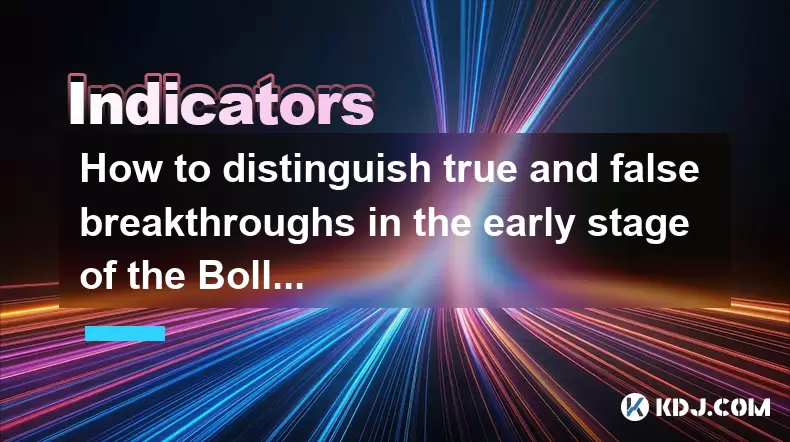
How to distinguish true and false breakthroughs in the early stage of the Bollinger Band opening?
Jun 20,2025 at 10:35pm
Understanding the Bollinger Band StructureBollinger Bands consist of three lines: a simple moving average (SMA) in the middle, and two outer bands that are standard deviations away from the SMA. These bands expand and contract based on market volatility. When the bands begin to widen, it often signals an increase in price volatility, which traders inter...
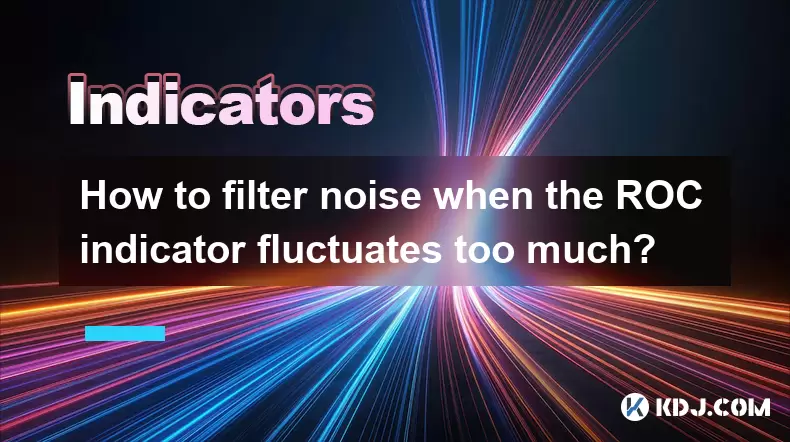
How to filter noise when the ROC indicator fluctuates too much?
Jun 20,2025 at 11:07pm
Understanding the ROC Indicator and Its SensitivityThe Rate of Change (ROC) indicator is a momentum oscillator that measures the percentage change in price between the current closing price and the closing price from a specified number of periods ago. When the ROC indicator fluctuates too much, it can create misleading signals, especially in volatile or...
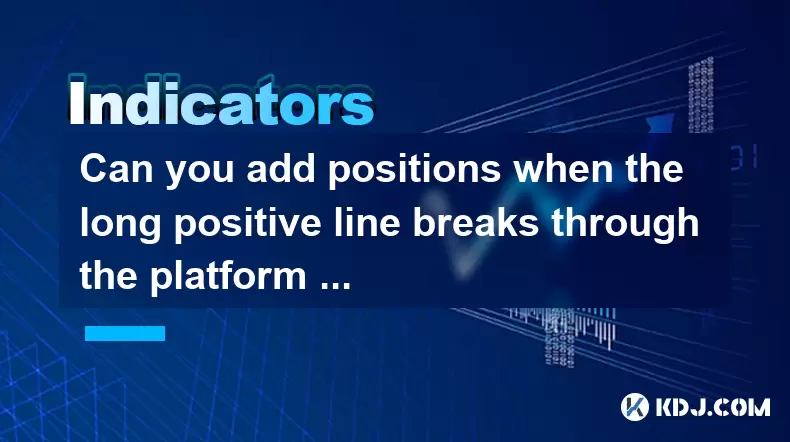
Can you add positions when the long positive line breaks through the platform and then shrinks and falls back?
Jun 20,2025 at 08:57pm
Understanding the Price Pattern: Breakthrough, Retract, and ConsolidationIn cryptocurrency trading, one of the commonly observed patterns involves a long positive line breaking through a consolidation platform, followed by a retraction or pullback. This scenario often raises questions among traders about whether to add positions after such a move. The p...
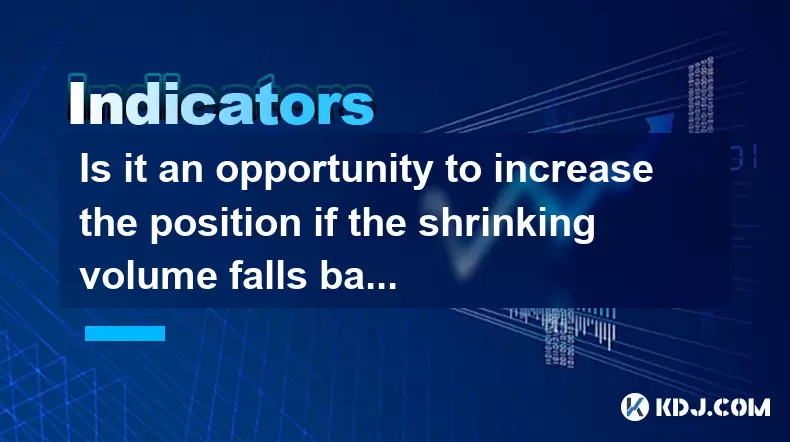
Is it an opportunity to increase the position if the shrinking volume falls back to the rising trend line?
Jun 20,2025 at 06:22pm
Understanding the Shrinking Volume in Cryptocurrency TradingIn cryptocurrency trading, volume is one of the most critical indicators used to confirm price movements and trends. When traders observe a scenario where volume shrinks during a pullback, it can signal either a lack of selling pressure or an imminent reversal. This phenomenon often occurs when...
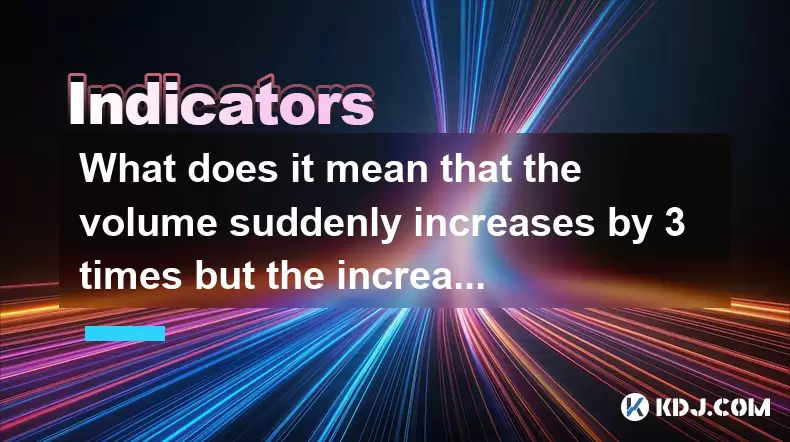
What does it mean that the volume suddenly increases by 3 times but the increase is limited?
Jun 20,2025 at 10:07pm
Understanding Sudden Volume Surges in Cryptocurrency TradingIn the world of cryptocurrency trading, sudden changes in volume are common, but when a digital asset sees its trading volume jump by three times within a short period, it raises questions. This phenomenon typically indicates increased market interest or activity surrounding the asset. However,...

Is the golden cross of the ROC indicator below the zero axis effective?
Jun 20,2025 at 09:42pm
Understanding the ROC Indicator and Its Role in Cryptocurrency TradingThe Rate of Change (ROC) indicator is a momentum oscillator widely used by traders to assess the speed at which cryptocurrency prices are changing. It measures the percentage difference between the current price and the price from a certain number of periods ago. The ROC helps identif...

How to distinguish true and false breakthroughs in the early stage of the Bollinger Band opening?
Jun 20,2025 at 10:35pm
Understanding the Bollinger Band StructureBollinger Bands consist of three lines: a simple moving average (SMA) in the middle, and two outer bands that are standard deviations away from the SMA. These bands expand and contract based on market volatility. When the bands begin to widen, it often signals an increase in price volatility, which traders inter...

How to filter noise when the ROC indicator fluctuates too much?
Jun 20,2025 at 11:07pm
Understanding the ROC Indicator and Its SensitivityThe Rate of Change (ROC) indicator is a momentum oscillator that measures the percentage change in price between the current closing price and the closing price from a specified number of periods ago. When the ROC indicator fluctuates too much, it can create misleading signals, especially in volatile or...

Can you add positions when the long positive line breaks through the platform and then shrinks and falls back?
Jun 20,2025 at 08:57pm
Understanding the Price Pattern: Breakthrough, Retract, and ConsolidationIn cryptocurrency trading, one of the commonly observed patterns involves a long positive line breaking through a consolidation platform, followed by a retraction or pullback. This scenario often raises questions among traders about whether to add positions after such a move. The p...

Is it an opportunity to increase the position if the shrinking volume falls back to the rising trend line?
Jun 20,2025 at 06:22pm
Understanding the Shrinking Volume in Cryptocurrency TradingIn cryptocurrency trading, volume is one of the most critical indicators used to confirm price movements and trends. When traders observe a scenario where volume shrinks during a pullback, it can signal either a lack of selling pressure or an imminent reversal. This phenomenon often occurs when...

What does it mean that the volume suddenly increases by 3 times but the increase is limited?
Jun 20,2025 at 10:07pm
Understanding Sudden Volume Surges in Cryptocurrency TradingIn the world of cryptocurrency trading, sudden changes in volume are common, but when a digital asset sees its trading volume jump by three times within a short period, it raises questions. This phenomenon typically indicates increased market interest or activity surrounding the asset. However,...
See all articles

























































































